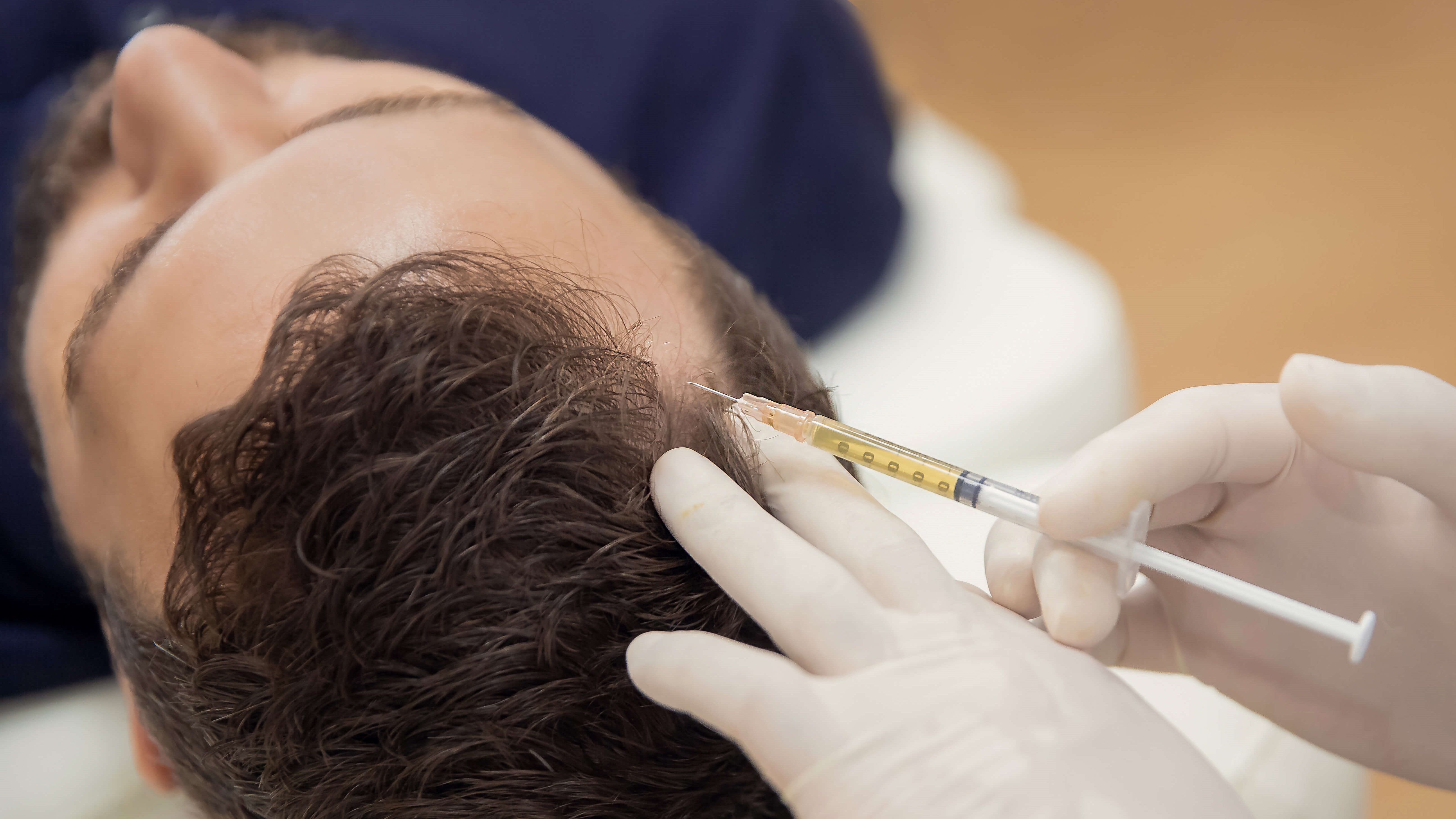Turning Back the Clock: PRP for Hair Loss
&srotate=0)
What Options are Available for Treating Hair Loss?
In aging men, balding has often been seen as one of life’s irreversible problems. While hair transplants are an option for many, they do not reverse the process of hair loss itself and require an external resource for treatment. Imagine a less-strenuous solution to this problem that allows the body to reverse the process through its own volition. Platelet Rich Plasma, or PRP, is one such solution.
In 2019, the FDA officially approved the use of PRP for the treatment of hair loss. The therapy utilizes a concentrated derivative of a patient’s blood platelets, which promote regenerative abilities and healing. PRP’s potential applications in non-surgical procedures and treatments are expansive, and we here at Ospina help to make many of these interventional treatments a reality. PRP therapy is similar to orthobiologics and procedures such as Stem Cell Therapy that also heal musculoskeletal injuries and pain, and restore tissue functionality using products extracted from your own body. From treating hair loss to knee osteoarthritis, the range covered by regenerative medicine using PRP is quite wide.
In treating hair loss, PRP usage is specifically targeted towards androgenetic alopecia, otherwise known as male-patterned baldness in men and female-patterned hair loss in women. The difference between male-patterned baldness and female-patterned hair loss is that men typically experience progressive hair loss and thinning that together lead to baldness, while women typically only experience the thinning of their hair over time. Prior to the FDA’s approval of PRP for hair loss treatment, the only available treatments were oral Finasteride, topical minoxidil (and minoxidil foam for female-patterned hair loss), and low level lasers; however, for many, these offered little promise. The introduction of PRP as a potential treatment opened many doors for those previously dissatisfied with available treatment options.
How Does PRP Turn Back the Clock?
The platelet rich plasma contains a high concentration of growth factors, which are the proteins found in platelets that help speed up tissue repair. Hair loss results from damaged hair follicles, so it can be hypothesized that the growth factors in PRP will help reverse the processes associated with androgenetic alopecia and help speed the tissue’s healing process.
Once the platelets are extracted, spun into a concentrated mixture, and isolated, they are injected into targeted regions of a patient’s scalp in a process similar to micro-needling, such that small injections are made in the dermis with strict regulation. This strict regulation by a physician is crucial because excess injections can impair the PRP response and insufficient micro-wound creation may lead to less effective responses.
Cost Comparison of PRP v. Hair Transplant
The PRP for hair-loss procedure has been approved by the FDA, but is still technically considered an experimental procedure. Though this means it is not covered by most insurances, this minimal coverage generally applies to hair transplants and other related cosmetic procedures as well. Here at Ospina, the out-of-pocket costs for our PRP for hair loss and hair thinning are $1,000 for a single treatment or $2,400 for the recommended set of three treatments. Hair transplants, alternatively, typically cost between $5,000 and $14,000. Even if you are not one for math, these numbers speak for themselves!
In Conclusion…
The studies have shown that PRP for hair loss is effective in 30-40% of patients with androgenetic alopecia, with increasingly promising statistics such as these coming out each year. PRP therapy may be a more affordable yet equally effective alternative to hair transplants for your hair regrowth. With medical advancements like this and other treatments found at Ospina Medical, we may be able to help you turn back the clock on your hair loss.
Written By: Mohammed Sharaf
Edited By: Camden Rowe